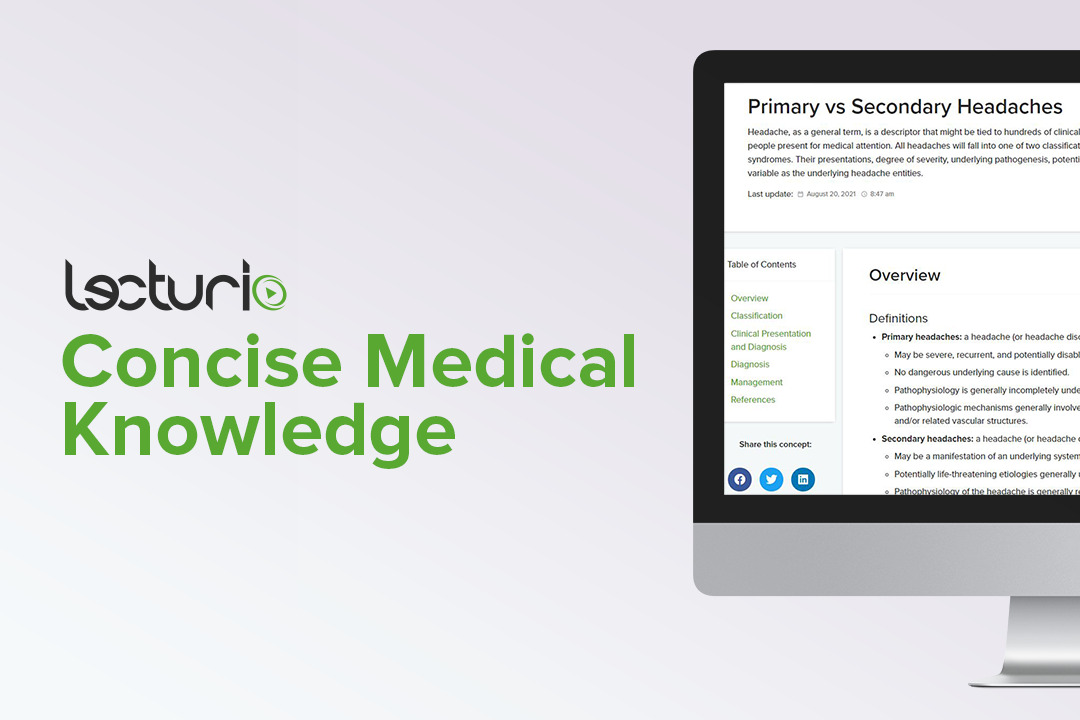Playlist
Show Playlist
Hide Playlist
Case: 38-year-old Obese Woman with Headache
-
Slides Headaches High Low Pressure Headaches.pdf
-
Download Lecture Overview
00:01 So that's the low pressure headaches, intracranial hypotension. 00:05 What about high pressure? Let's learn a little bit more about that by also considering a case. 00:10 This is a 38-year-old obese woman with a 3-month history of headaches. 00:15 She reports by temporal throbbing headaches. 00:18 They're worse in the early morning and they've been awakening her out of sleep at 4am over the past 2 weeks. 00:25 There's mild nausea, but no photo or phonophobia like we would see with migraine. 00:30 She also reports mild vision complaints, difficulty seeing cars, particularly from the lateral sides when driving and that's worse at night. 00:38 Her current medications include oral contraceptives, which in some people can increase risk of coagulation, hypercoagulability. 00:47 On exam, she has difficulty with finger counting in the far peripheral fields. 00:52 She has a far peripheral field abnormality or homonymous hemianopia, bilateral reduction in adduction of the extraocular movements, bilateral reduction in abduction with extraocular movements. 01:06 So what type of headache syndrome does she have? Well, there's some key clinical features that would tip us off here. 01:13 The first is this high-pressure description. 01:16 She has early morning awakening. 01:18 Many people's headaches will present in the early morning. 01:22 But the difference in this patient is that these headaches are awakening her up out of sleep. 01:27 We all get up and may feel a headache from obstructive sleep apnea or medication overuse headache or just a migraine. 01:35 But few headaches wake us up out of sleep. 01:38 And that's the characteristic feature here which is pointing us in the direction of a high pressure headache. 01:43 In addition, we see some other key associated features. 01:47 We have the clinical description that makes us concerned for bilateral sixth nerve palsies, difficulty with looking laterally, reduction of gaze, peripheral fields laterally, and then ultimately on exam, we find that reduction in sixth nerve activation, bilateral sixth nerve palsies. 02:05 So is this a primary or secondary headache syndrome? Well, this is a secondary headache syndrome and requires evaluation for the cause before we proceed forward with treatment. 02:16 This patient underwent MRI of the brain and here we're looking at MRI post contrast after gadolinium contrast. 02:22 And we're looking down at the level of the sinuses. 02:25 We're seeing the transverse sinuses over the the superficial aspect of the cerebellum here and we see a good sinus an open clear paitent sinus on the right, there's white contrast filling the sinus on the right. 02:39 On the left we see an obstruction. 02:40 We see a blockage to flow, in fact, we can see a clot in the left transverse sinus that may be contributing this patient's high pressure headaches. 02:49 And here we can see that pointed out on the left transverse sinus a venous sinus thrombosis. 02:56 So what's the treatment for this headache? Should we start anticoagulation, prescribe topiramate for headache treatment refer to ophthalmology, given the vision complaints or recommend weight loss and send to a personal trainer? Well, weight loss and personal trainers can be very important for managing patients with high pressure headaches, particularly pseudotumor cerebri. 03:18 And they're a part of the multifactorial component of management of those patients. 03:23 But this patient has a venous sinus thrombus and weight loss is not going to fix that blood clot in the venous sinus and so is not the optimal treatment or initial step for managing this patient. 03:33 Prescribing topiramate for headache can be a great medication for migraine but this patient does not have migraine, and topiramate will not fix this venous sinus thrombus. 03:43 Referral to ophthalmology is something that we think about in patients who have vision deficits and this patient does have peripheral visual field deficits that are reminiscent of a homonymous hemianopia which could localize to the chiasm. 03:56 But the imaging confirms venous sinus thrombosis and the patient's symptoms really suggest a high pressure headache and possible venous sinus thrombus. 04:04 And so in this patient the appropriate treatment is to start anticoagulation and that's the treatment of choice for patients who have a blood clot in the venous sinuses or a venous sinus thrombus.
About the Lecture
The lecture Case: 38-year-old Obese Woman with Headache by Roy Strowd, MD is from the course Headache.
Included Quiz Questions
What is the first line of treatment for a patient with a high-pressure headache from venous sinus thrombosis?
- Stopping birth control pills and starting anticoagulant medication
- Weight loss with calorie restriction and exercise
- Triptan medication
- Anti-epileptic medication
- Beta-blocker medication
What occurs as a result of CN VI (abducens nerve) palsy seen with increased intracranial pressure?
- Inability to look laterally
- Inability to adduct the eye
- Exotropia with the eye looking laterally
- Eyelid drooping (ptosis)
- Pupillary defect due to ophthalmoplegia
Customer reviews
5,0 of 5 stars
| 5 Stars |
|
5 |
| 4 Stars |
|
0 |
| 3 Stars |
|
0 |
| 2 Stars |
|
0 |
| 1 Star |
|
0 |




